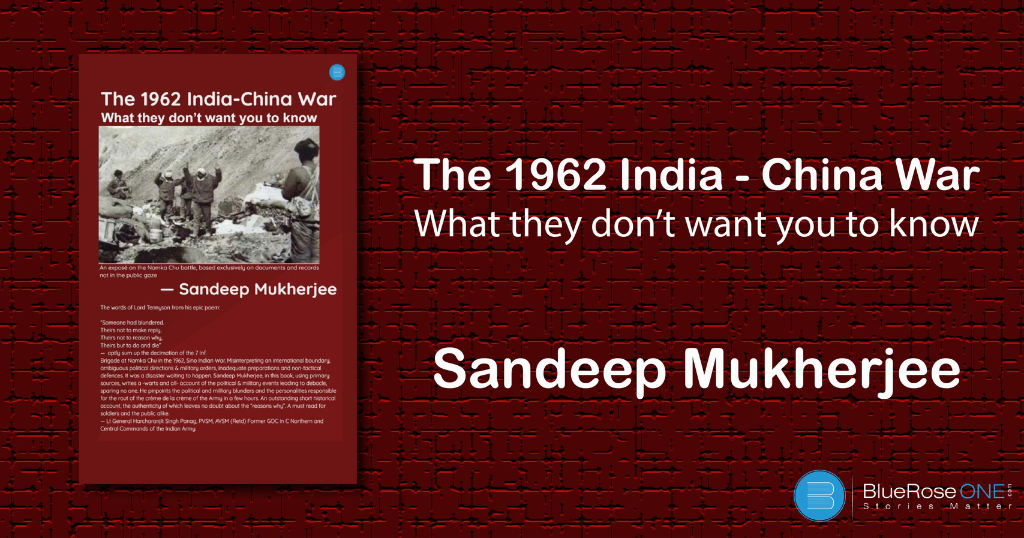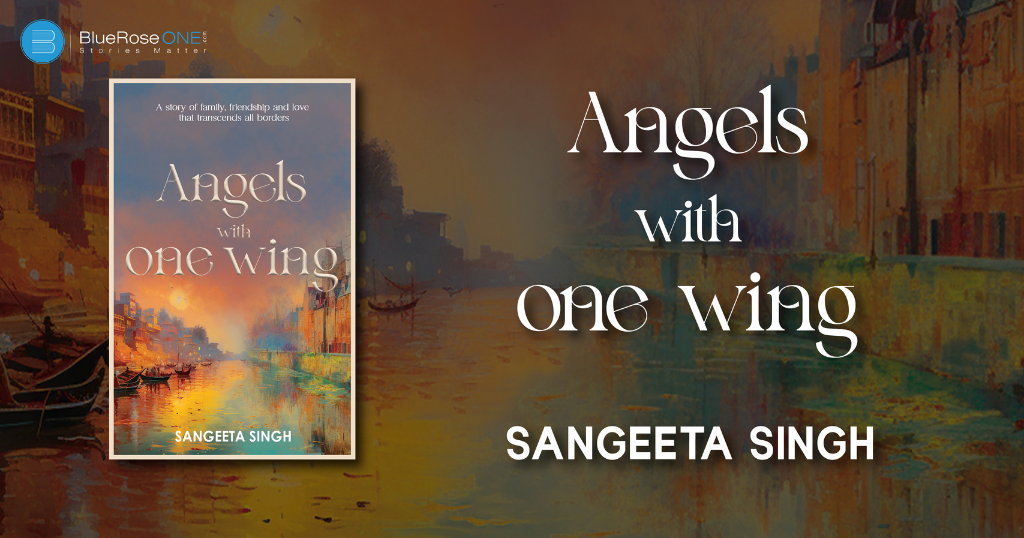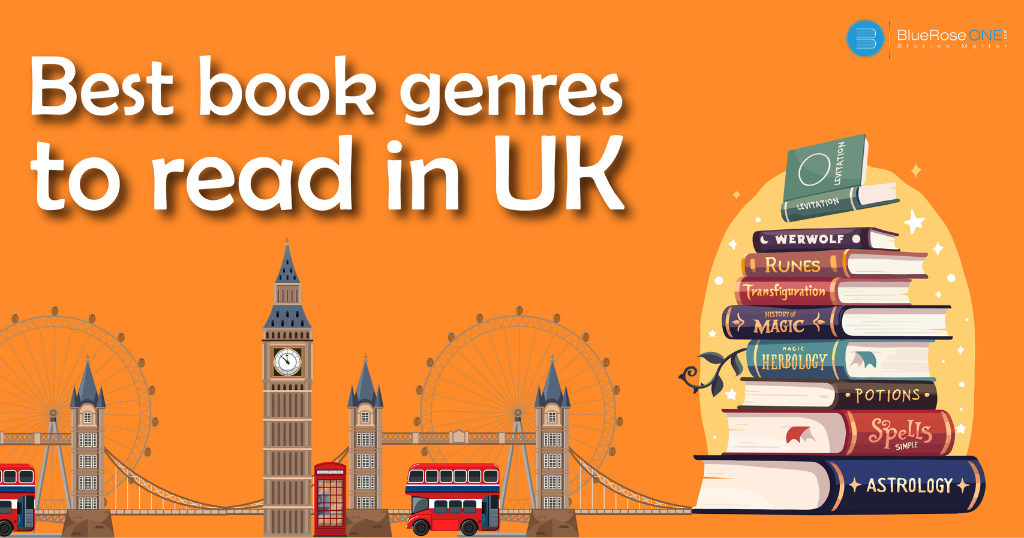
Best Book Genres to Read in the UK
With a rich literary legacy, the United Kingdom has given birth to some of the most well-known writers and timeless classics in the world. The UK offers a literary environment that appeals to a wide range of preferences, whether you’re a visitor or a resident of this diverse country. Read: Learn how to Write a Book in the UK Targeting UK audience The UK’s varied geography and culture have inspired a wide range of engrossing book genres, from the busy streets of Dickensian London to the foggy moors of Charlotte Brontë’s Wuthering Heights. We’ll examine the distinctive appeal that each book genre offers readers in this literary paradise as we explore the top book genres to read in the UK in this blog. Classic British Literature Mystery and Crime Historical Fiction Fantasy Contemporary Literature Classic British Literature The literary treasure trove of classic British literature helps to describe the social and cultural climate of many historical eras. The literary legacy of the United Kingdom is rich in classic works that have had a lasting impact on the field. Romantic poet William Wordsworth laid the foundation for a literary movement that embraced individualism and emotional expression by engrossing readers in the splendour of nature and human feeling. As we move into prose, Jane Austen’s books are renowned for their wit and insight into the social mores of their day. Austen created characters and stories that still have an impact on readers today by using astute observations and biting wit to create a window into the customs and values of the past. The timeless appeal of classic British literature is found in its deft character development, attractive prose, and examination of social norms. Whether readers are drawn into the Gothic horrors of Mary Shelley’s ‘Frankenstein’ or must navigate the intricacies of Charles Dicken’s ‘Great Expectations,’ these literary masterpieces offer glimpses into historical periods. Dickens, in particular, made use of his novels to expose and condemn the social ills and difficulties of the Victorian era, in addition to telling gripping stories. Classic British literature is essentially a time capsule that lets readers explore historical settings while delving into the complexities of human nature, cultural expectations, and universal themes that unite us all across time. This is true both within and outside of the UK. Best Book Genre to Read in UK 2024 Mystery and Crime Mystery and crime fiction writers have a long history of flourishing in the United Kingdom. From the creation of the renowned investigator Sherlock Holmes by Sir Arthur Conan Doyle to the modern psychological thrillers written by Gillian Flynn, the genre has changed dramatically while continuing to captivate readers. The fascination with enigmatic stories set against the backdrop of the UK is especially strong, whether it’s the mist-filled alleys of Victorian London or the picturesque yet mysterious towns that Agatha Christie brings to life in her novels. The genre’s ongoing popularity stems from its ability to create intriguing puzzles as well as from the moody locations that are essential to the narrative. The misty, gas-lit lanes of Victorian London or the ostensibly peaceful towns in Agatha Christie’s novels offer another level of mystery and draw readers into the stories’ tangible mystique. A wide range of modern authors is contributing to the richness of the mystery and crime fiction genre for readers in the United Kingdom. Classic writers such as P.D. James and Dorothy L. Sayers continue the rich historical tradition of British crime literature, while Tana French, with her deftly constructed storylines, is a witness to the genre’s continuous progression. All things considered, the UK continues to be a fascinating centre for mystery and crime writing, skillfully fusing innovation and tradition to provide readers with an engrossing escape into the worlds of intrigue and suspense. Best Book Genre to Read in UK 2024 Historical Fiction Considering the long and varied history of the United Kingdom, it is hardly surprising that people adore historical fiction. Prominent writers such as Hilary Mantel, acclaimed for her Wolf Hall trilogy, have a unique talent for taking readers back in time—more precisely, to the Tudor era. Mantel gives historical people and events life via painstaking research and vivid narrative, giving readers a sense of being fully immersed in the rich tapestry of the past. British readers are drawn to historical literature set in a variety of eras, including the turbulent years of World War II. Books like Anthony Doerr’s “All the Light We Cannot See” provide readers with a thoughtful and melancholic perspective on the country’s complicated past during the current international crisis. The UK’s past can be explored through this genre in a variety of ways, including the intricate details of royal life, the revolutionary effects of the Industrial Revolution, and the shadowy realm of wartime espionage. Historical fiction stands out for its skillful blending of historical events with creative storytelling to create an engrossing whole that appeals to a wide range of readers. Readers who immerse themselves in these stories not only acquire historical understanding but also get emotionally connected to the people and occasions that have defined the fascinating history of the UK. You may also like: Top 10 Best Biographies of All Time Best Book Genre to Read in UK 2024 Fantasy The magical genre of fantasy literature has made the United Kingdom its home, presenting amazing worlds and engrossing stories that have enthralled readers all over the world. J.R.R. Tolkien’s enduring epic The Lord of the Rings and J.K. Rowling’s Harry Potter series, which has become a global sensation, are two examples of this phenomenon. These fantastical works immerse readers in worlds full of magical animals, gorgeous scenery, and complex magical systems. The UK has contributed far more to the fantasy genre than just stories; it creates complete worlds that invite readers to suspend disbelief and go on amazing adventures. While kids walk the halls of Hogwarts in J.K. Rowling’s wizarding realm, many races and civilizations live in Tolkien’s Middle-earth against the backdrop of epic journeys. In the UK, fantasy fiction has…
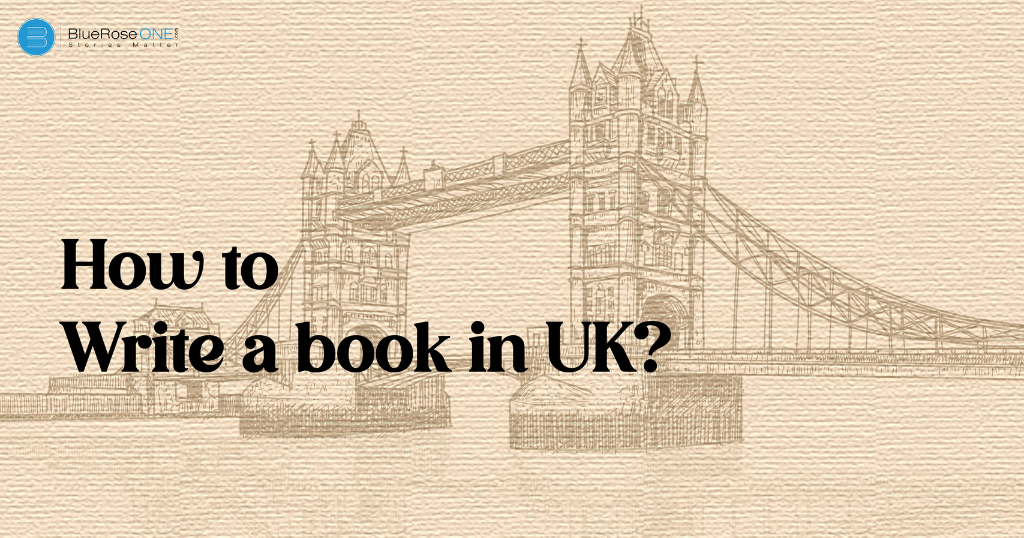
How to Write a Book in the UK Targeting UK audience
Writing a book is a fulfilling experience that lets you impart your knowledge, insights, and experiences to a global audience. Aspiring writers in the United Kingdom have a distinct environment because of the country’s rich literary heritage and varied readership. The effect of your work can be increased by knowing the subtleties of writing for a UK audience, regardless of experience level. We will explore the crucial processes of creating a book in the UK in this extensive guide, which is specifically designed to appeal to readers in this area. Every stage, from the first ideation to the final polish of your manuscript, is essential to writing a book that will captivate UK readers. Read: List of top 10 most Famous Self-Published Books in UK – 2024 Regardless of your writing genre—fiction or non-fiction, traditional or self-published—this guide will teach you the skills and knowledge you need to successfully manage the writing process. Now, pick up your pen or turn on your laptop, and let’s go on this literary journey! Choosing a TopicThe first step in creating a book is to choose an engaging subject. Think about your hobbies, areas of experience, and the requirements of your intended UK audience. Look at industry gaps and current trends to identify a distinctive angle that will draw readers in. Your choice of topic should support your writing objectives and be interesting and pertinent. Research and PlanningWriting a well-informed and engaging book requires extensive research. Collect data from dependable sources, investigate various viewpoints, and arrange your discoveries. Make a thorough outline that includes the main ideas, chapters, and a completion schedule for your book. Planning will assist you in maintaining organisation and attention while writing Establishing Writing GoalsKeeping writing momentum and motivation high requires the establishment of specific, attainable writing goals. Decide how many pages or words you want to write every day or every week. Divide the overall objective of finishing the book into smaller, more doable tasks. You may monitor your development with this method and acknowledge minor accomplishments along the way Starting with Cursive WritingUsing a cursive writing style might help increase writing speed and inventiveness. It makes it possible for thoughts to flow more freely and continuously, which is especially advantageous while generating ideas and in the initial phases of book drafting. Try writing in cursive to see if it makes writing easier and allows you to come up with ideas more quickly. Content WritingWriting content for a book entails coming up with interesting and educational ideas that your readers will find interesting. Put your attention on offering insightful commentary, engrossing tales, and concise concept transmission. Make sure your material is organised and easy to read, and use a tone and style that appeal to your target audience in the UK. Use stories, research, and pertinent examples to bolster your arguments and improve the book’s overall quality Writing a ThesisCreating a thesis for your book entails outlining a succinct and convincing case or central notion that you will investigate and bolster throughout the publication. To give readers a clear idea of the goal and scope of your work, your thesis should be precise, unique, and pertinent to your subject. To bolster your case and draw readers in, include proof, analysis, and research to back up your claim. Story writingWriting stories is the art of creating engrossing and entertaining narratives. Whether you write fiction or non-fiction, storytelling is essential to producing a book that readers will remember and find impactful. Develop well-rounded characters, conjure up a vivid setting, and develop a compelling plot that will hold readers’ attention from start to finish. Use sensory details and descriptive language to make your story come to life. Incorporate elements of conflict, tension, and resolution to sustain readers’ interest. Rewriting and editingThe writing process requires you to refine and polish your text through the phases of rewriting and editing. When you’re rewriting, concentrate on making your writing more coherent, clear, and fluid. Cut out superfluous words, reword awkward sentences, and make sure your thoughts are communicated clearly and rationally. Editing entails proofreading for spelling, grammar, and punctuation mistakes, in addition to formatting problems. To find areas for improvement and make sure your work is polished and ready for publishing, think about asking beta readers or experienced editors for their opinions. Writing DescriptivelyBy evoking vivid descriptions of your scenarios, people, and surroundings, you arouse readers’ emotions and senses. Your audience will have a deep, immersive experience if you use sensory elements and colourful language. To create a strong feeling of place and atmosphere, describe the sights, sounds, tastes, smells, and textures. Writing well-described passages gives your narrative additional depth and realism, which increases the appeal and recall value of your work. Writing ReflectivelyWriting reflectively entails self-reflection and examination of your ideas, encounters, and educational journey. Explore your development, new perspectives, and feelings around your writing journey through reflective writing. Throughout the writing process, consider the difficulties you’ve encountered, the lessons you’ve learned, and the changes you’ve gone through. Writing reflectively can help you become a better writer and improve your ability to meaningfully connect with readers. Instances of creative writingExamining instances of creative writing might help you get ideas and guidance for your work. Read a range of literary works to broaden your perspectives and pick up new skills. Examine how writers craft engrossing stories by utilising language, structure, and storytelling techniques. To improve your creative writing, pay attention to narrative voice, character development, and plot twists. You might get useful tips and ideas for your writing endeavours by looking at examples of creative writing. Getting FeedbackConsulting with other people to get their opinions on your writing can help you make it better and see it from new angles. Give your manuscript to writing groups, beta readers, or professional editors for helpful feedback and suggestions on how to make it better. Be receptive to criticism and prepared to make changes in response to it. You may find blind spots, improve your ideas, and polish your text…
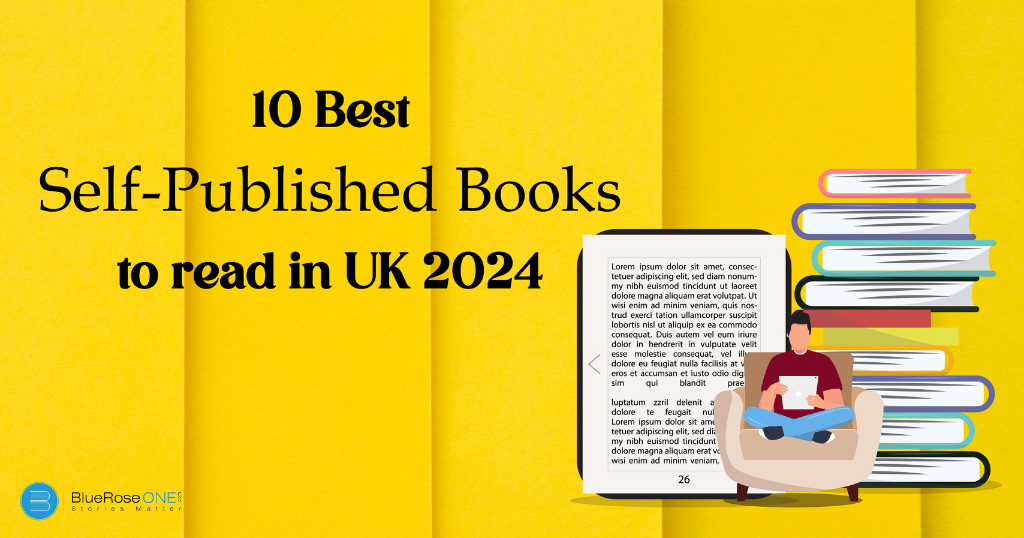
List of top 10 most Famous Self-Published Books in UK – 2024
Looking for best self-published books? Here’s a list of best self-published books of all time. Self-publishing has become a popular option for writers who want to share their stories with the world, as the publishing industry has seen a change in recent years. Self-published books are becoming more popular in the UK, a nation rich in literary heritage, and are upending the power of established publishing corporations. Self-publishing has never been easier or more varied, with sites like Amazon book publishing and a plethora of self-publishing businesses providing easy access to readers. When authors decide to self-publish their novels, they frequently find that they are in charge of every part of the process, from marketing and distribution to writing and editing. The number of self-published novels, non-fiction books, and other works has increased as a result of this creative freedom. Readers are thus exposed to an abundance of self-published novels that are on par with those issued by mainstream publishers, demonstrating the breadth of creativity and skill within the UK self-publishing scene. Read: List of 10 Most Famous Self-Published Authors of all Time. Here are 10 top famous self-published books in UK, which have achieved significant success: “Are You a Good Leader?” by Richard Ahenkorah “Writing the Shadow” by Joanna Penn “The Bell Tower” by R.J. Ellory “Twisted Lives” by Mel Sherratt “Fourteen Days” by C.J. Lyons “Right Behind You” by Rachel Abbott “Silent Ruin” by David J. Gatward “A Midlife Gamble” by Cary J. Hansson “Greek Secret” by Francesca Catlow “My Brother’s Keeper” by M.L. Rose 1. “Are You a Good Leader?” by Richard Ahenkorah Richard Ahenkorah’s “Are You a Good Leader?” offers an insightful examination of the traits and values of leadership. Using his personal experiences and knowledge, Ahenkorah provides a thorough manual for anyone hoping to lead successfully in any industry. The book explores important leadership topics, including teamwork, communication, and decision-making while offering helpful advice and techniques for both career and personal development. Because of Ahenkorah’s interesting and approachable writing style, it’s easy to comprehend and put complicated leadership ideas into practice. He provides examples and tales from real life to highlight the value of empathy, honesty, and vision in leadership. “Are You a Good Leader?” is a useful resource for anyone trying to improve their leadership skills, whether they are aspiring entrepreneurs or seasoned leaders. You may also like: Book Review: Lord of the Flies by William Golding “Are You a Good Leader?” by Richard Ahenkorah, Famous Self-Published Book of all Time. 2. “Writing the Shadow” by Joanna Penn Joanna Penn’s self-published book “Writing the Shadow” examines the darker sides of human nature and how writers might successfully use them in their writing. Penn explores the “shadow self,” the subconscious and frequently suppressed facets of our personalities that shape our emotions, ideas, and behaviour. Penn demonstrates to authors how to access their shadow selves to produce more genuine and captivating characters and narratives through perceptive analysis and useful guidance. She also looks at treating touchy subjects and divisive issues with compassion and decency. “Writing the Shadow” provides useful tools and approaches for delving into the darker aspects of the human experience, making it an invaluable resource for self-publishing writers who want to add complexity and depth to their writing. You may also read: The Stormlight Archive Series Review: Is It Worth Reading? “Writing the Shadow” by Joanna Penn, Famous Self-Published Book of all Time. 3. “The Bell Tower” by R.J. Ellory R.J. Ellory’s eerie and atmospheric self-published book “The Bell Tower” tackles themes of loss, atonement, and the pursuit of meaning in a harsh and merciless world. The novel, which takes place in a small Georgian town, centres on John Harper, the protagonist—a man tormented by his history and trying to figure out who he is in the world. A labyrinth of secrets and deceit that threatens to ruin all John holds dear is revealed to him as a sequence of unexplained events takes place, including the discovery of a body in the town’s bell tower. John faces his demons as he explores the mystery further and must decide between seeking forgiveness and exacting revenge. The compelling and very moving self-published book “The Bell Tower” will keep readers captivated until the very end. You may also like: The Rise of Self-Publishing: Empowering Authors “The Bell Tower” by R.J. Ellory, Famous Self-Published Book of all Time. 4. “Twisted Lives” by Mel Sherratt Mel Sherratt’s self-published crime book “Twisted Lives” explores the murky underbelly of a tiny community and is a gritty and captivating read. The narrative tracks the lives of multiple characters whose paths cross in unexpected and frequently hazardous ways. Every character in the story—from a disturbed adolescent seeking retribution to a detective plagued by his past—must face their demons as they make their way through a violent, treacherous, and lie-filled world. “Twisted Lives” examines the lengths people will go to protect themselves and those they love as suspense builds and secrets are revealed. Sherratt’s self-published book is an engrossing read that will have readers on the edge of their seats until the very end, thanks to its compelling plot and nuanced characters. “Twisted Lives” by Mel Sherratt, Famous Self-Published Book of all Time. 5. “Fourteen Days” by C.J. Lyons Author C.J. Lyons’s riveting self-published medical thriller “Fourteen Days” transports readers to the high-stakes realm of organ donation. The narrative centres on transplant surgeon Dr. Lucas Madden, who finds himself in a moral bind after learning that a well-to-do patient has bypassed the transplant waiting list to obtain a new heart. Lucas discovers a network of dishonesty and corruption as he investigates the case further, one that could reveal the murky side of the medical sector. Lucas has to work quickly to find the truth and heal his patient before it’s too late, since time is of the essence and lives are at stake. The gripping and provocative self-published thriller “Fourteen Days” will keep readers interested. You may also like: List of Top 10 Famous Ravinders Singh Books of All Time…
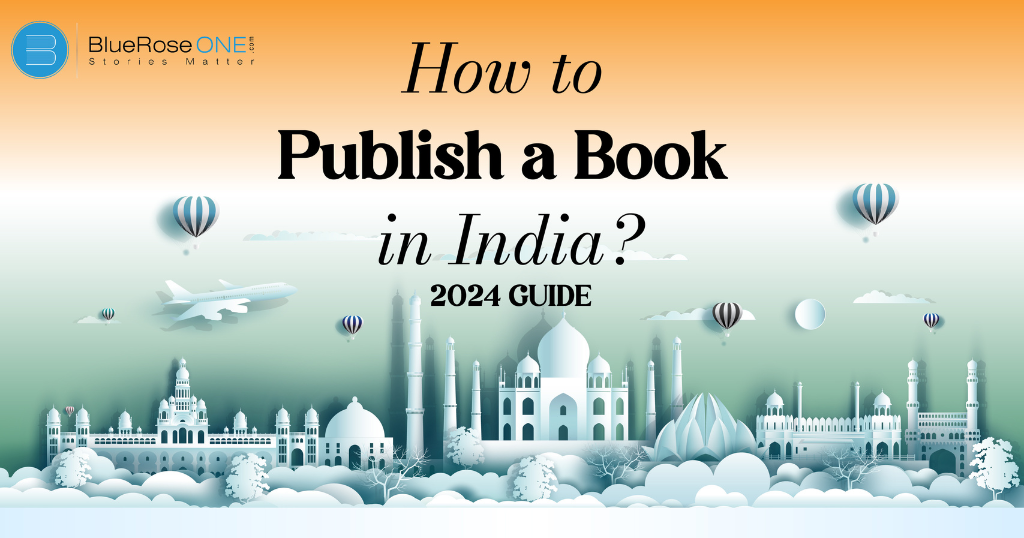
Guide to Successful Book Publishing in India 2024
Publishing a book is a dream for many aspiring writers and authors. In India, a country rich in literary heritage and diverse storytelling traditions, the publishing industry continues to thrive. However, navigating the process of publishing a book can be daunting, especially when it comes to understanding the associated costs. In this blog, we will delve into the various expenses involved in publishing a book in India. From manuscript preparation to printing and marketing, we will break down the costs and provide insights to help aspiring authors make informed decisions. Manuscript Preparation Book Design and Layout Printing ISBN and Copyright Registration Distribution and Marketing E-book Conversion Manuscript Preparation Manuscript preparation is a crucial initial phase in the intricate process of bringing a book to publication. This fundamental step involves the meticulous crafting, editing, and formatting of the manuscript to meet the rigorous standards set by the publishing industry. The journey begins with the author’s creative endeavour in writing the manuscript. The author pours heart and soul into crafting a compelling narrative, developing characters, and building a world that captivates readers. However, the raw creation is just the beginning; the manuscript undergoes a transformative process to elevate it to professional standards. Editing plays a pivotal role in refining the manuscript. While some authors may choose to self-edit initially, hiring a professional editor is often recommended. A professional editor brings a fresh perspective, keen attention to detail, and a wealth of experience to the manuscript. They meticulously review the text for grammar, syntax, and coherence, ensuring that the narrative flows seamlessly. Moreover, they provide valuable insights into the overall structure, character development, and plot coherence, contributing to the enhancement of the manuscript’s quality. Cost: The cost of editing services can vary depending on the length and complexity of the manuscript. On average, freelance editors in India may charge anywhere from Rs. 1,000 to Rs. 5,000 per 1,000 words. Book Design and Layout After the meticulous process of manuscript preparation, the next crucial step in the journey of publishing a book in India is the design and layout phase. This phase holds paramount importance as it involves creating the visual elements that will capture the reader’s attention and enhance their overall reading experience. The book cover, often referred to as the face of the book, plays a pivotal role in influencing a potential reader’s decision to pick it up. A well-designed book cover should not only be visually appealing but also convey the essence and theme of the book. It serves as the first impression and is a powerful marketing tool. Authors may choose to collaborate with a professional book designer or use self-publishing platforms that offer cover design templates. The interior layout is equally significant, contributing to the overall readability and enjoyment of the book. An aesthetically pleasing layout ensures that the text flows seamlessly, with proper formatting, fonts, and spacing. The goal is to create a visually engaging environment that complements the content and provides a comfortable reading experience. Professional designers are adept at balancing elements like margins, fonts, and chapter headings to create a harmonious layout. Authors must consider the genre and target audience while designing both the cover and interior layout. For instance, a vibrant and dynamic design might be suitable for a young adult novel, while a more sophisticated and minimalist approach might be fitting for literary fiction. Consistency in design elements throughout the book contributes to a cohesive and polished final product. While professional book designers can be hired to handle the design and layout, some authors choose to take on the task themselves, especially with the availability of user-friendly design software. Regardless of the approach, investing time and effort into creating an eye-catching cover and a reader-friendly layout is an essential part of ensuring the success of the book in a competitive market. Cost: Hiring a professional book designer can cost anywhere from Rs. 10,000 to Rs. 50,000, depending on the complexity of the design and the designer’s experience. You may also like: From Page to Sound: How Audio Books Have Transformed Reading Printing Printing constitutes a substantial portion of the overall expenses incurred in the publishing process, particularly for authors choosing traditional printing methods. The costs associated with printing are influenced by various factors, each playing a crucial role in determining the final financial commitment. One key determinant is the quality of paper selected for the book. The choice of paper can significantly impact the overall aesthetics and durability of the final product. Higher-quality paper tends to be more expensive, but it can enhance the visual appeal and tactile experience for readers. Conversely, opting for lower-quality paper may reduce costs but could compromise the book’s overall quality. The printing technique employed is another factor contributing to the expenses. Authors can choose between offset printing and digital printing, each with its own associated costs. Offset printing, suitable for larger print runs, often requires the creation of printing plates, resulting in higher initial setup costs. On the other hand, digital printing allows for more flexibility with smaller print runs and eliminates the need for extensive setup, making it a cost-effective option for limited quantities. The quantity of copies to be printed is a crucial consideration that directly impacts the per-unit cost. Printing in bulk typically reduces the cost per copy, making it a more economical choice for authors expecting higher demand. However, printing in smaller quantities may be preferable for authors testing the market or with budget constraints. Cost: Printing costs typically range from Rs. 50 to Rs. 200 per copy for a standard paperback book. However, printing in bulk can result in lower per-unit costs. ISBN and Copyright Registration Securing an International Standard Book Number (ISBN) and copyright registration are critical steps in the process of publishing a book. These identifiers not only provide legal protection but also contribute to the book’s recognition and accessibility. An ISBN is a unique numerical code assigned to a book, serving as a universal identifier. It plays a crucial role in the distribution and marketing of a book. Obtaining an ISBN for your book is essential, especially if you plan to…
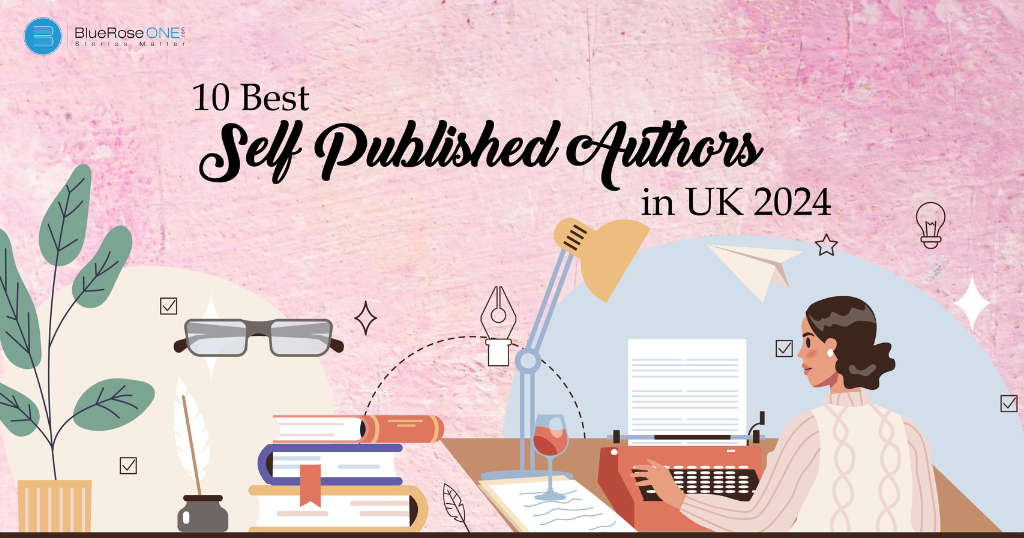
List of 10 Famous self-published authors in UK
The emergence of self-publishing has caused a profound upheaval in the publishing industry in recent years. The traditional publishing houses are no longer the only means by which authors can distribute their works to a broad audience. An increasing number of writers in the UK are choosing to self-publish, and their triumphs serve as an encouragement to other budding writers across the globe. We will explore the paths of ten well-known self-published authors in the UK in this blog, with an emphasis on Hugh Howey, the self-publishing revolution, and the effects of self-publishing a book Here are the 10 Famous Self-Published Authors in UK: Richard Ahenkorah Mark Dawson Amanda Hocking Kerry Wilkinson Mel Sherratt L.J. Ross David Leadbeater C.L. Taylor Angela Marsons Adam Croft The Self-Publishing Revolution: A Game-Changer for Authors The publishing industry has seen a significant transformation with the rise of self-publishing, bringing with it unparalleled power over authors’ literary careers. In the past, authors had to overcome severe obstacles to become published, depending on literary agencies and established publishing firms for approval and distribution. The introduction of self-publishing platforms, such as Amazon Kindle Direct Publishing (KDP), has made the process more accessible and democratic by allowing authors to distribute their works directly to readers worldwide without the use of middlemen. This revolution has allowed for the expression of many points of view, creating a literary landscape that represents a variety of human experiences and tastes. Now, authors may engage directly with readers in ways that were previously unthinkable by eschewing the traditional gatekeepers who decide the fate of their creations. Benefits of Self-Publishing a Book: A Closer Look Self-publishing changes the publishing process fundamentally and provides authors with a multitude of benefits. One major advantage is creative control, which gives writers complete control over everything from cover art to content. Self-publishing allows authors to take advantage of opportunities by bringing their works to market quickly and at an unmatched speed. Another big benefit is financial gain; self-published authors receive better royalties than their professionally published peers. Furthermore, the direct interaction between writers and readers is encouraged, doing away with the necessity for middlemen. Self-publishing allows authors to customize their marketing tactics and reach their desired audience without being constrained by traditional publishing models. This is because self-publishing is instantaneous and flexible. Essentially, self-publishing has many advantages that go well beyond ease of use; the dynamics of authorship have undergone a paradigm shift, offering hitherto unseen chances for artistic expression and business success. 1. Richard Ahenkorah: Writing His Own Success Story Richard Ahenkorah’s “Are You a Good Leader?” offers an insightful examination of the traits and values of leadership. Using his personal experiences and knowledge, Ahenkorah provides a thorough manual for anyone hoping to lead successfully in any industry. The book explores important leadership topics, including teamwork, communication, and decision-making while offering helpful advice and techniques for both career and personal development. Because of Ahenkorah’s interesting and approachable writing style, it’s easy to comprehend and put complicated leadership ideas into practice. He provides examples and tales from real life to highlight the value of empathy, honesty, and vision in leadership. “Are You a Good Leader?” is a useful resource for anyone trying to improve their leadership skills, whether they are aspiring entrepreneurs or seasoned leaders. You may also read: 10 Classic Flat Character Examples in Literature and Film Richard Ahenkorah, Famous Self-Published Author in UK 2. Mark Dawson: Mastering the Thriller Genre With his mastery of the thriller genre, Mark Dawson has become a well-known name in the self-publishing community. Former attorney turned best-selling novelist Dawson’s secret to success is not just writing suspenseful thrillers but also skillfully utilising internet marketing techniques. His capacity to amass a devoted following highlights the significance of self-promotion for independent writers. Dawson is a prime example of how success in the self-publishing space can be achieved by understanding the thriller genre and effectively navigating the internet realm. Anubhav Agarwal, Famous Self-Published Author in UK 3. Amanda Hocking: The Indie Sensation As a pioneer in the field of self-publishing, Amanda Hocking has earned the moniker “The Indie Sensation.” Her rise to fame is mostly attributed to the young adult paranormal novels that she wrote. Hocking became a symbol of independent writers’ capacity to reach a worldwide audience without traditional gatekeepers after her decision to self-publish proved revolutionary. Hocking’s journey, which has sold over a million copies, demonstrates the effectiveness of self-promotion and the potential impact independent authors may have on the literary world. You may also like: 10 Elf Name Generators Fantasy Writers Can’t Miss! Amanda Hocking, Famous Self-Published Author in UK 4. Kerry Wilkinson: A Self-Publishing Phenomenon Kerry Wilkinson has sold over six million books on her own and has become a self-publishing superstar. Wilkinson is a crime and mystery novelist, and his success shows how much potential there is for independent writers to have a big impact on the literary world. His journey demonstrates how an author may achieve extraordinary success by constant supply of high-quality content and effective reader engagement, establishing Wilkinson as a formidable self-publishing force. Kerry Wilkinson, Famous Self-Published Author in UK 5. Mel Sherratt: Writing Her Own Success Story Mel Sherratt is a successful self-published author who landed a deal with Amazon Publishing after successfully writing her own success story. Sherratt’s ascent in the literary realm can be attributed to the popularity of her crime books among readers. Her aptitude for navigating the changing publishing landscape—from working as an independent writer to collaborating with major players in the field—exemplifies the variety of options open to writers in the modern publishing environment. Mel Sherratt, Famous Self-Published Author in UK 6. L.J. Ross: Building a Literary Empire Independently L.J. Ross has distinguished herself by creating an autonomous literary empire. Ross’s success story highlights the possibility for authors to succeed outside of established publishing institutions. Ross is best known for the DCI Ryan mystery series. Through her constant production of interesting content and interaction with her audience, Ross has become a well-known…
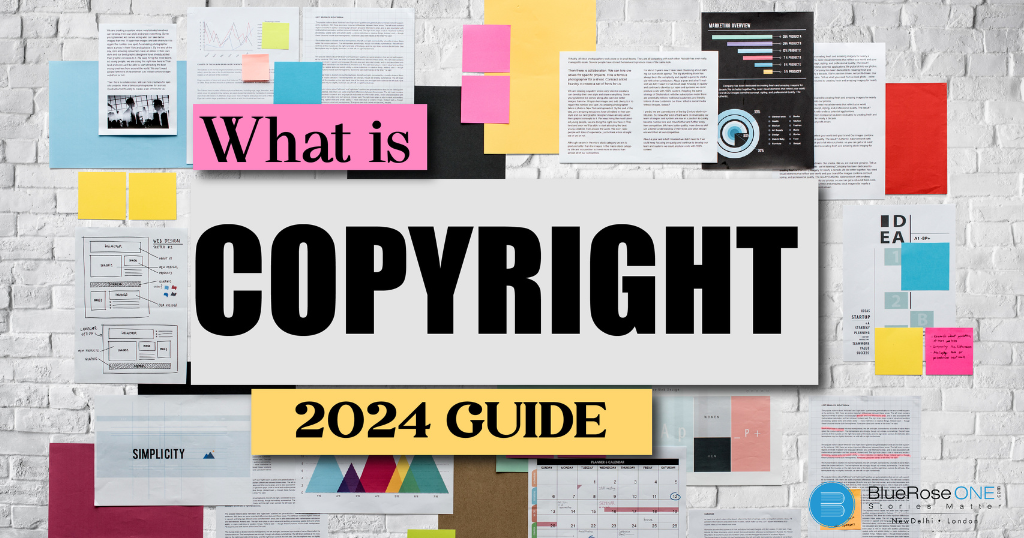
A Comprehensive Guide to Listings, ISBNs, and Copyright
In the vast and diverse field of literature, authors, publishers, and ardent readers all navigate a maze of complexities. Every stage of the process, from publishing a book to guaranteeing its protection under copyright law, is essential. In this in-depth blog post, we will examine the importance of listing, ISBNs (International Standard Book Numbers), and copyright, along with the procedures involved. Section 1: The Power of Listing The first and most important step in making a book accessible to a larger audience is listing it. Listing your book on several platforms is crucial for its visibility and reach, regardless of whether you are the author, the self-publisher, or a member of a publishing house. Several online platforms and websites offer listings of books for readers, buyers, and sellers. Here are some examples: Amazon: Website: Amazon Books Amazon is a popular online marketplace that provides a vast selection of books in various formats. Goodreads: Website: Goodreads Goodreads is a social platform for book lovers where users can discover, rate, and review books. It also provides book listings. BookFinder: Website: BookFinder BookFinder allows users to search for new and used books, comparing prices across various online retailers. Google Books: Website: Google Books Google Books offers a vast collection of digital books and previews. Users can find information about books and authors. LibraryThing: Website: LibraryThing LibraryThing is a cataloging and social networking site for book enthusiasts, allowing users to create and share book lists. Book Depository: Website: Book Depository Book Depository is an international online bookstore offering free worldwide shipping for a wide range of books. AbeBooks: Website: AbeBooks AbeBooks is an online marketplace for books, specializing in rare and out-of-print books. Barnes & Noble: Website: Barnes & Noble Barnes & Noble is a large bookstore chain with an online platform where users can find and purchase books. Project Gutenberg: Website: Project Gutenberg Project Gutenberg offers over 60,000 free eBooks, including many classic literary works. Bookish: Website: Bookish Bookish provides book recommendations, reviews, and author interviews, along with a database of books. When listing books online, it’s essential to choose a platform that aligns with your needs, whether you’re looking to buy, sell, or simply discover new titles. 1.1 Online Platforms Online platforms serve as the lifeline that connects writers with their readership directly in today’s digital landscape. Big websites like Goodreads, Barnes & Noble, and Amazon work as worldwide billboards, giving writers the chance to post book details, build comprehensive profiles, and interact with readers by exchanging ratings and reviews. This digital space not only increases a writer’s audience but also facilitates quick and easy communication between authors and readers, making books easier to find in the large online book market. 1.2 Local Bookstores Despite digital dominance, local bookstores retain an invaluable role in supporting authors within their communities. Particularly, independent booksellers provide a special opportunity for community involvement. Authors are able to prominently display and sell their works locally because of the consignment offers offered by many of these retailers. In addition to strengthening community support, this grassroots strategy gives writers a chance to create a physical presence and develop a more intimate relationship with readers outside of the virtual realm. 1.3 Libraries Putting your book on library lists is a smart way to get it in front of even more people. Libraries are great places to get exposure because they are important centres of literature and knowledge. Authors can reach a wide range of readers who visit libraries for different literary purposes by being present there. In addition to increasing an author’s prominence, this exposure strengthens a book’s place in the larger body of human knowledge and storytelling by enhancing the cultural and educational fabric of communities. You may also like: 10 Classic Flat Character Examples in Literature and Film Section 2: Decoding ISBNs Every edition and variation of a book is given an International Standard Book Number (ISBN), which is a unique identification. Getting an ISBN is important for a number of reasons, chief among them being the ability to track books and sales more effectively. 2.1 Understanding ISBN Components The International Standard Book Number, or ISBN, is a 13-digit number made up of separate parts that provide unique details about a book. The prefix element, which indicates the language or place of publication, the registration group, which identifies the national or geographic entity, the publication element, the registrant element for the publisher, and a check digit that verifies the accuracy of the ISBN are among the components. These elements come together to create a special code that facilitates effective book tracking and identification across the international publishing and distribution network. ISBN-10 Format: This format consists of 10 digits. ISBN-10: 0-306-40615-2 ISBN-13 Format: This format consists of 13 digits. ISBN-13: 978-0-306-40615-7 2.2 Importance of ISBNs Global Recognition: ISBNs are globally recognised, which makes international sales and distribution easier. Language and regional boundaries are no longer an obstacle to the easy recognition and international exchange of books because of this uniform identifying system. Cataloguing and Inventory: ISBNs are essential to the process of classifying books and keeping well-organised inventories. This meticulous tracking, which continues throughout the book’s lifecycle, enables publishers and retailers alike to maintain accurate records, streamline logistics, and manage inventory effectively. Library Access: A lot of libraries throughout the world require ISBNs in order for books to be kept in their collections. This provision guarantees that libraries may efficiently index and categorise their collections, making it easier for users to seek and access specific books within the huge library of literary works. You may also like: 10 Elf Name Generators Fantasy Writers Can’t Miss! 2.3 How to Obtain an ISBN Obtaining an ISBN is a simple procedure that is usually handled by national ISBN agencies throughout numerous nations. Through these agencies, authors and publishers can start the application process online or by using a manual application technique. The allotted ISBN turns into an invaluable resource, giving writers and publishers a distinct identity that facilitates worldwide distribution and helps them…
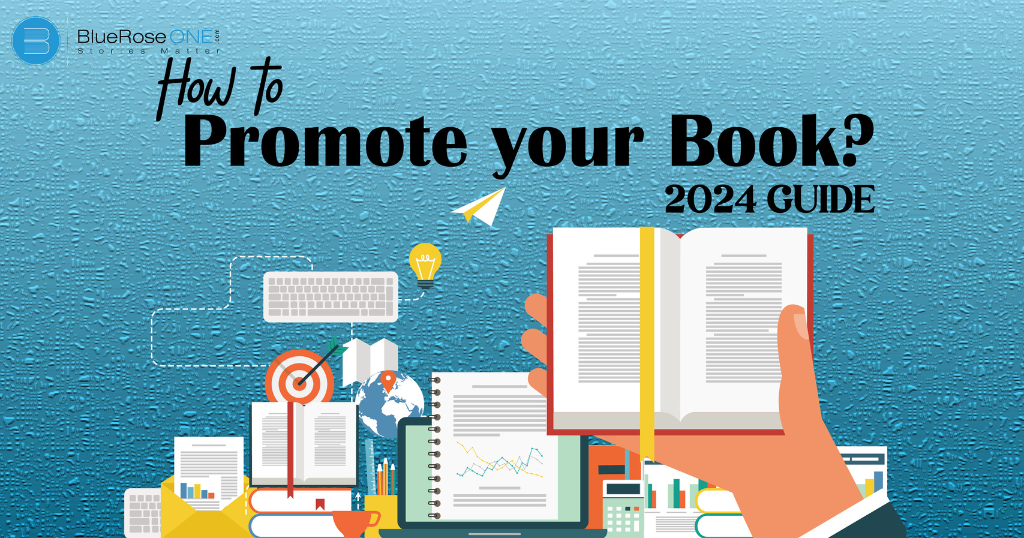
How to Market and Promote your book in 2024?
The landscape of book marketing has undergone significant transformations in recent years, propelled by the ever-evolving digital era and changing reader preferences. As we step into 2024, authors find themselves amidst a dynamic environment that demands innovative strategies to ensure their literary creations don’t merely grace the shelves but captivate the hearts and minds of readers. In this comprehensive guide, we will explore the most effective and up-to-date methods for marketing and promoting your book in 2024. Understanding the Contemporary Reader Crafting a Captivating Online Presence Leveraging Advanced Marketing Techniques Collaborations and Partnerships Public Relations and Traditional Media Paid Advertising Strategies Post-Launch Strategies for Sustained Success Understanding the Contemporary Reader Digital DominanceIn the contemporary literary landscape, an author’s digital footprint plays a pivotal role in connecting with readers and establishing a lasting impact. In the era of smartphones and constant connectivity, a compelling online presence is not just a luxury but a necessity. At the forefront of an author’s digital arsenal is the author’s website, a virtual space that serves as a hub for all things related to the writer and their work.Building a captivating author website involves more than just displaying book covers and a brief bio. It’s about creating an immersive experience for visitors, offering insights into the author’s personality, writing process, and the journey behind each book. The website becomes a platform for readers to delve deeper into the author’s world, fostering a sense of connection that transcends the pages of a book.Engaging in social media platforms amplifies an author’s reach and impact. Platforms like Instagram, Twitter, and Facebook provide direct channels for communication with readers. Regular updates, engaging content, and interactive posts turn social media into a dynamic space where authors can share glimpses of their writing lives, book recommendations, and even connect with fellow authors. These platforms, when used authentically, transform casual readers into dedicated fans.Leveraging online book communities further extends an author’s reach. Platforms like Goodreads offer spaces for readers to discuss, review, and recommend books. Authors actively participating in these discussions not only gain visibility but also build a community around their work. It’s not merely about selling a book; it’s about fostering a genuine connection with readers who share a passion for literature. Data-Driven Decision MakingHarnessing the power of data analytics is not merely a trend; it’s a strategic imperative for authors looking to make informed decisions and optimise their marketing efforts.Platforms such as Goodreads, Amazon Author Central, and Google Analytics provide authors with invaluable insights into reader behavior. Goodreads, a platform dedicated to readers, allows authors to see how their books are being discovered, track reader reviews, and even participate in discussions. Amazon Author Central offers a centralised space for authors to manage their Amazon book sales, analyse customer reviews, and explore keywords that lead to book discovery. Google Analytics, a robust tool for website analysis, provides a comprehensive view of visitor interaction with an author’s website. From understanding the most visited pages to tracking the effectiveness of promotional campaigns, authors can fine-tune their online presence based on real-time data.The era of guesswork in book marketing is long gone. With data-driven decision-making, authors can tailor their strategies to align with what readers truly respond to. For instance, if analytics reveal a surge in interest whenever the author shares behind-the-scenes glimpses on social media, they can amplify this approach for greater engagement. Leveraging Advanced Marketing Techniques Book trailers and visual contentBook trailers, short and impactful, have become a powerful tool on social media platforms. These trailers, akin to movie previews, provide a sneak peek into the essence of the book, utilising engaging visuals and captivating soundtracks. A well-crafted book trailer not only entices readers but also serves as a shareable asset, amplifying its reach across various platforms.Moreover, author videos have emerged as a personal and relatable way for writers to connect with their audience. These short videos, often shared on social media or author websites, allow readers to get a glimpse of the person behind the pen. Authors can share insights into their writing process, discuss the inspiration behind their books, or simply convey a personal message to foster a deeper connection with their audience. Podcasting and audiobooksThe auditory medium has witnessed a surge in popularity, making podcasting an invaluable tool for authors to engage with their audience. Author podcasts offer a unique platform to share personal anecdotes, discuss writing journeys, and provide industry insights. By hosting interviews with fellow authors or experts, writers can diversify their content, appealing to a broader audience. The intimate nature of podcasts allows authors to establish a more profound connection with listeners, creating a community around their literary endeavours.Additionally, the rise of audiobooks has opened new avenues for authors to reach a growing market of audio enthusiasts. Considering the increasing popularity of audio content, converting a book into an audiobook can expand its accessibility. Authors can collaborate with professional narrators to bring their words to life, tapping into a demographic that prefers the immersive experience of listening to a story. A Virtual reality book launchesAs technology advances, virtual reality (VR) has entered the realm of book marketing, offering authors innovative ways to connect with readers. Virtual reality book launches provide immersive experiences that go beyond traditional events. By collaborating with VR developers, authors can transport readers into a virtual space, recreating the ambiance of a physical book launch. This not only accommodates a global audience but also adds a layer of excitement and interactivity, making the book launch a memorable event.The immersive experiences offered through VR book launches create a unique opportunity for readers to engage with the author, ask questions, and participate in the celebration of the book. This innovative approach not only sets a book apart in a crowded market but also demonstrates the author’s willingness to embrace cutting-edge methods to connect with their audience. You may also like: 10 Classic Flat Character Examples in Literature and Film Crafting a Captivating Online Presence Author WebsiteYour author website serves as the virtual storefront for your literary works, making its design and content crucial components of your online presence….
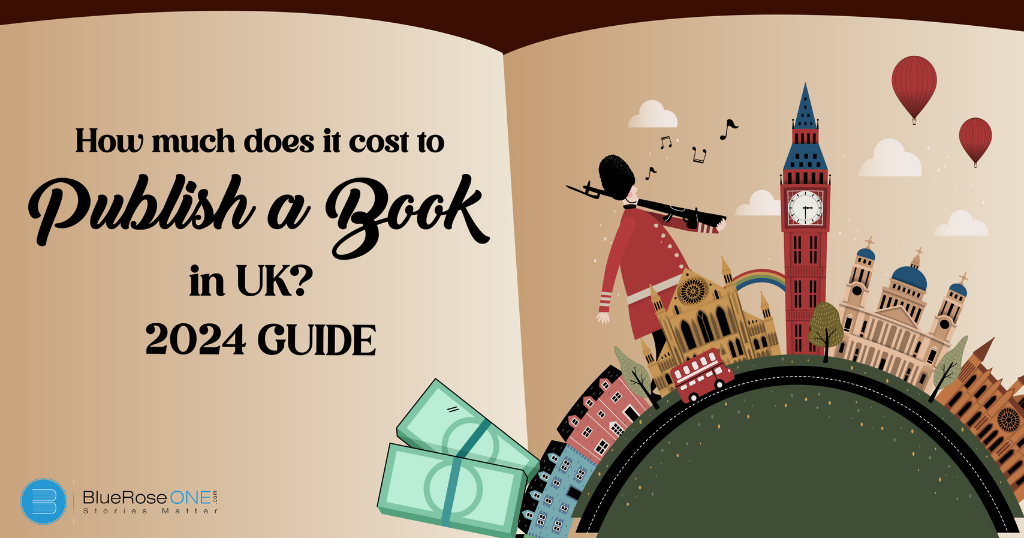
How Much Does It Cost to Publish a Book in UK
Starting a book publishing journey is an exciting undertaking, but it has costs associated with it. Prospective writers frequently have to navigate a complex web of expenses, ranging from cover design and marketing to revising their manuscripts. Read: A Complete 2024 Guide: How to Write a Book & Get it Published Globally We will explore all aspects of publishing costs in depth in this extensive guide, illuminating the nuances that impact the financial picture of releasing a book. Writing and Editing Costs 1.1 Manuscript Editing Manuscript editing is an essential first step in the publishing process. Reaching this financial milestone is essential to guaranteeing that your work of literature is polished to the finest caliber. Professional editing services cover several areas of your text, such as developmental editing, which thoroughly examines the manuscript’s narrative, character development, and structure as part of its process. Copyediting delves deeply into the specifics of syntax, grammar, and general language mechanics. Its main goals are to make the material easier to read and more consistent with language usage. Proofreading involves carefully checking for spelling, grammar, and formatting mistakes to provide a polished final output. A number of variables, like the duration and complexity of your task, as well as the level of skill needed, can affect how much these services cost. Investing in expert editing ensures that your work resonates with readers and stands out in the crowded literary environment. It also improves the language and the overall structure, coherence, and impact of your narrative. Proofreading: This involves checking for grammar, spelling, punctuation, and basic style issues. Rates may range from $0.01 to $0.03 per word. Copy editing: This involves more in-depth editing for grammar, syntax, and consistency. Rates may range from $0.02 to $0.05 per word. Substantive/Developmental Editing: Involves restructuring and reorganising content for clarity and coherence. Rates may range from $0.04 to $0.10 per word. Hourly Rates: Some editors prefer to charge hourly rates, which can vary widely based on experience. Rates may range from $30 to $100 or more per hour. Flat Fees: Some editors charge a flat fee based on the entire project. This could range from a few hundred to several thousand dollars, depending on the complexity and length of the manuscript. It’s important to note that these are general estimates, and rates can vary. Always discuss your specific needs with the editor and ask for a detailed quote based on the scope of the work. Additionally, consider asking for sample edits or references to gauge the editor’s skills and suitability for your project. 1.2 Beta Readers and Feedback Many authors intelligently use beta readers to get early feedback on their work before diving into the world of professional editing. Although there is no up-front financial expense, the procedure necessitates a significant time and effort commitment. Beta readers offer a new viewpoint on your book and are frequently made up of aspiring readers or other writers. Their comments are helpful in pointing out plot gaps, weak points, and locations that need further explanation. It is essential to complete this phase in order to polish your work before hiring an editor. The combined feedback that you receive from beta readers helps to strengthen your work overall, making it more durable and engaging as it moves forward through the following phases of the publication process. The rates for beta-reading a manuscript can vary widely depending on several factors, including the length of the manuscript, the experience and reputation of the beta-reader, and the specific services offered. As per current market rates, typical rates for beta reading could range from $0.001 to $0.005 per word or a flat fee per manuscript. Experienced and specialised beta readers may charge higher rates. Additionally, some beta readers may offer different levels of service, such as providing detailed feedback, editing suggestions, or a general overall impression. Design and Formatting Costs 2.1 Book Cover Design As much as we like to say, “Don’t judge a book by its cover,” the publishing industry actually operates on the exact opposite principle. One important factor that significantly affects a reader’s decision to pick up a book is the book cover. A professional cover designer is essential to creating visually appealing covers; their fees vary depending on experience and design intricacy. Putting money into a visually appealing book cover is a calculated decision that will pique interest from prospective customers, effectively communicate the content of the work, and leave a lasting impact on the crowded shelves of brick-and-mortar and online retailers. The market rate for book cover design can vary widely depending on several factors, including the designer’s experience, the complexity of the design, and the specific requirements of the project. Entry-Level Designers: Beginners or less experienced designers may charge anywhere from $50 to $200 for a book cover. Intermediate-Level Designers: Designers with moderate experience may charge between $200 and $500 for a book cover. Experienced Designers: Experienced and professional designers with a strong portfolio may charge anywhere from $500 to $1,500 or more. Specialised Designers: Specialised or renowned book cover designers may charge higher rates, ranging from $1,500 to several thousand dollars. Additional Services: Some designers may offer additional services such as concept development, multiple revisions, or custom illustrations, which can affect the overall cost. 2.2 Interior Layout and Formatting A book’s professionalism is greatly enhanced by its internal layout and formatting, even though its cover is what draws readers in. The interior of the book will be aesthetically pleasing, well-organized, and compliant with the technical requirements for print and digital distribution if a professional formatter is hired. A well-formatted book improves the reading experience by increasing readers’ enjoyment and accessibility. Proper formatting guarantees that the book follows industry guidelines, which goes beyond appearance and makes it easier to go from a rough draft to a polished, publishable product—whether it’s in print or digital format. The market rates for formatting and beautification services can vary widely depending on factors such as the complexity of the task, the extent of design work involved, the expertise of the service provider, and the specific…

